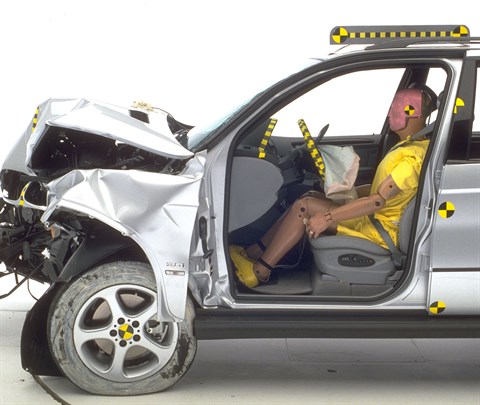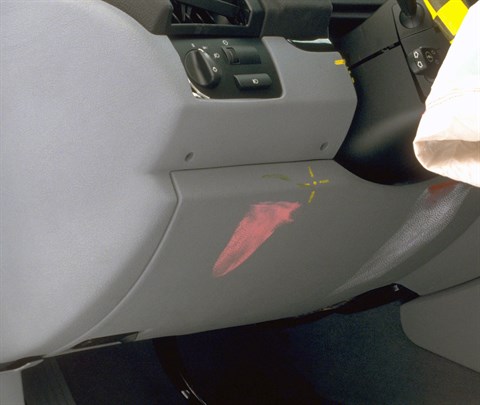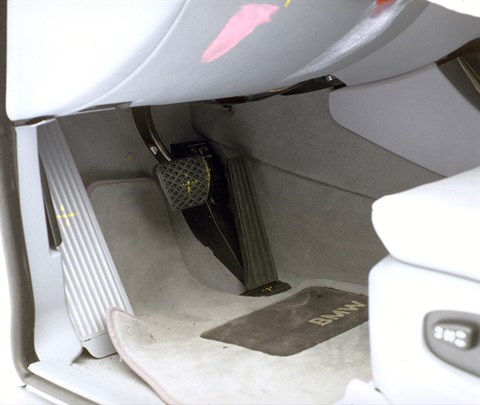Moderate overlap front: original test
Rating applies to 2001-06 models built after June 2000
Tested vehicle: 2001 BMW X5 3.0i 4-door 4wd
The BMW X5 was introduced in the 2000 model year. All 2001-06 X5 models manufactured after June 2000 include structural changes to improve occupant protection in frontal crashes (note: information about when a specific vehicle was manufactured is on the certification label typically affixed to the car on or near the driver door).
The Insurance Institute for Highway Safety has evaluated the crashworthiness of a 2001 X5 with the structural changes in a 40 mph frontal offset crash test into a deformable barrier.
| Evaluation criteria | Rating |
|---|---|
| Overall evaluation | |
| Structure and safety cage | |
| Driver injury measures | |
| Head/neck | |
| Chest | |
| Leg/foot, left | |
| Leg/foot, right | |
| Driver restraints and dummy kinematics | |

Action shot taken during the frontal offset crash test.

The dummy's position in relation to the steering wheel and instrument panel after the crash test indicates the driver's survival space was maintained very well.

Dummies' knees and/or shins routinely hit and often damage the areas under the instrument panel. These areas are smoothly padded and contoured in the X5.

Intrusion into the driver's space was minimal, and all leg and foot injury measures were low.
Head restraints & seats
Seat type: Base seats
| Overall evaluation | |
|---|---|
| Dynamic rating | |
| Seat/head restraint geometry |
Seat type: Sport seats
| Overall evaluation | |
|---|---|
| Dynamic rating | |
| Seat/head restraint geometry |
Seat type: Comfort seats
| Overall evaluation | |
|---|---|
| Dynamic rating | |
| Seat/head restraint geometry |
About the head restraint & seat test
Currently, IIHS tests apply only to front seats.
